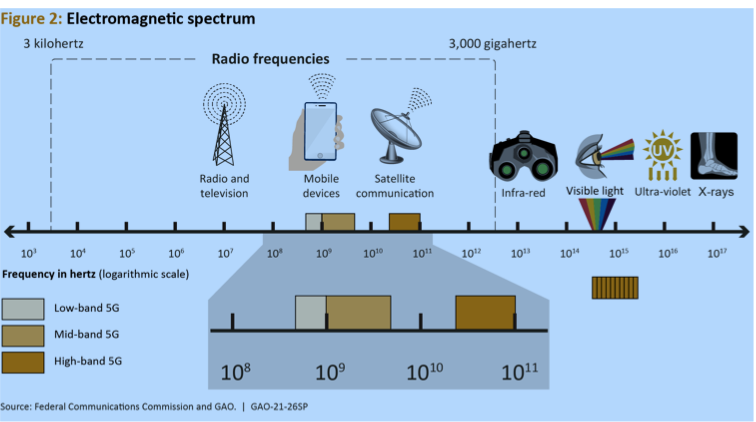Understanding UHF 403.527: A Comprehensive Guide
Ultra High Frequency (UHF) is a crucial part of the radio spectrum, and within this range, the specific frequency of 403.527 MHz holds particular significance. This article delves into the intricacies of UHF 403.527, exploring its applications, advantages, and impact on various industries. Whether you’re a technology enthusiast, a professional in communications, or simply curious about radio frequencies, this comprehensive guide will provide valuable insights into the world of UHF 403.527.
What is UHF?
Before we dive into the specifics of UHF 403.527, let’s establish a foundational understanding of UHF:
- UHF stands for Ultra High Frequency
- It covers the radio frequency range from 300 MHz to 3 GHz
- UHF waves have shorter wavelengths compared to lower frequency bands
- This frequency range is widely used for various applications, including television broadcasting, mobile phones, and two-way radios
The Significance of UHF 403.527
UHF 403.527 refers to a specific frequency within the UHF band. This particular frequency has gained importance due to its unique characteristics and applications. Here are some key points about UHF 403.527:
- It falls within the lower end of the UHF spectrum
- The frequency is often used for specialized communications
- UHF 403.527 offers a balance between range and data capacity
- It has applications in both public and private sectors
Applications of UHF 403.527
The versatility of UHF 403.527 makes it suitable for various applications across different industries. Let’s explore some of the most common uses:
1. Public Safety Communications
UHF 403.527 plays a crucial role in public safety communications:
- Emergency services often utilize this frequency
- It provides reliable communication for first responders
- The frequency allows for clear voice transmission in challenging environments
2. Industrial Communications
Many industries benefit from the use of UHF 403.527:
- Manufacturing plants use it for coordinating operations
- Construction sites rely on it for efficient project management
- Warehouses and logistics centers utilize this frequency for inventory control
3. Transportation
The transportation sector finds UHF 403.527 particularly useful:
- Taxi services use it for dispatch communications
- Public transportation systems coordinate their fleets using this frequency
- Airports may employ UHF 403.527 for ground operations
4. Private Land Mobile Radio (LMR) Systems
UHF 403.527 is a popular choice for private LMR systems:
- Businesses can set up their own communication networks
- It offers secure and reliable communication within organizations
- The frequency supports both voice and data transmission
Advantages of Using UHF 403.527
There are several reasons why UHF 403.527 is preferred for certain applications:
- Improved Signal Penetration: UHF waves can penetrate buildings and obstacles better than higher frequencies, making them ideal for urban environments.
- Balanced Range: UHF 403.527 offers a good balance between transmission range and data capacity, suitable for many applications.
- Less Congestion: Compared to some other frequencies, UHF 403.527 may experience less interference in certain areas.
- Equipment Availability: A wide range of equipment is available for this frequency, making it accessible for various users.
- Regulatory Compliance: In many regions, UHF 403.527 is allocated for specific uses, ensuring compliance with local regulations.
Technical Aspects of UHF 403.527
To fully appreciate the capabilities of UHF 403.527, it’s important to understand its technical characteristics:
Frequency Characteristics
- Exact Frequency: 403.527 MHz
- Wavelength: Approximately 0.74 meters
- Band: Falls within the UHF band (300 MHz – 3 GHz)
Propagation Properties
UHF 403.527 exhibits specific propagation properties that influence its performance:
- Line of Sight: Generally requires line of sight for optimal transmission
- Diffraction: Can bend around obstacles to some extent
- Reflection: May bounce off surfaces, potentially extending range in urban environments
Modulation Techniques
Various modulation techniques can be used with UHF 403.527:
- Analog Modulation: Frequency Modulation (FM) is common for voice communications
- Digital Modulation: Techniques like FSK or PSK for data transmission
- Trunking: Can be used in trunked radio systems for efficient channel utilization
Regulatory Considerations for UHF 403.527
The use of UHF 403.527 is subject to regulatory oversight in most countries. Here are some important points to consider:
- Licensing: Often requires a license from the appropriate regulatory body
- Power Limitations: Transmit power is typically regulated to prevent interference
- Channel Spacing: Specific channel plans may be in place to organize spectrum use
- International Coordination: Cross-border use may require coordination between countries
It’s crucial for users of UHF 403.527 to comply with local regulations to ensure legal and interference-free operation.
Challenges and Limitations of UHF 403.527
While UHF 403.527 offers many advantages, it’s important to be aware of its limitations:
- Range Limitations: Compared to lower frequencies, the range may be more limited, especially in challenging environments.
- Interference: In some areas, UHF 403.527 may experience interference from other users or electronic devices.
- Line of Sight Requirements: Optimal performance often requires a clear line of sight between transmitter and receiver.
- Bandwidth Constraints: The available bandwidth may be limited compared to higher frequency bands.
- Weather Effects: Severe weather conditions can impact signal quality and range.
Understanding these challenges helps in designing and implementing effective communication systems using UHF 403.527.
Future Trends and Developments in UHF 403.527
The landscape of radio communications is continually evolving, and UHF 403.527 is no exception. Here are some potential future trends:
- Digital Migration: Increasing shift from analog to digital communications
- Spectrum Efficiency: Development of more efficient modulation and coding techniques
- Integration with IoT: Potential use in Internet of Things (IoT) applications
- Software-Defined Radio: Greater flexibility through software-defined radio technologies
- Cognitive Radio: Possibility of dynamic spectrum access to optimize frequency use
As technology advances, we can expect to see new and innovative applications for UHF 403.527.
Best Practices for Using UHF 403.527
To maximize the benefits of UHF 403.527, consider the following best practices:
- Proper Equipment Selection: Choose high-quality, frequency-specific equipment
- Antenna Optimization: Use appropriate antennas and optimize their placement
- Regular Maintenance: Keep equipment well-maintained for optimal performance
- User Training: Ensure all users are properly trained in equipment operation
- Interference Mitigation: Implement strategies to minimize potential interference
- Compliance Monitoring: Regularly check for compliance with regulatory requirements
- System Planning: Carefully plan your communication system to meet specific needs
Following these practices can help ensure reliable and effective communication using UHF 403.527.
Case Studies: Successful Implementations of UHF 403.527
Let’s examine some real-world examples of successful UHF 403.527 implementations:
Case Study 1: City-wide Public Safety Network
A medium-sized city implemented a UHF 403.527 network for its emergency services:
- Coordinated police, fire, and ambulance communications
- Improved response times by 20%
- Enhanced inter-department cooperation
Case Study 2: Industrial Plant Communication System
A large manufacturing facility deployed a UHF 403.527 system:
- Streamlined production coordination
- Reduced downtime by 15%
- Improved worker safety through better communication
These case studies demonstrate the practical benefits of well-implemented UHF 403.527 systems.
Comparing UHF 403.527 with Other Frequencies
To better understand the unique position of UHF 403.527, let’s compare it with other frequency bands:
Frequency BandAdvantagesDisadvantagesVHF (30-300 MHz)Longer range, better penetrationLower data capacityUHF 403.527Good balance of range and capacityModerate building penetrationHigher UHF (>1 GHz)Higher data capacityShorter range, poor penetration
This comparison highlights the balanced nature of UHF 403.527, making it suitable for a wide range of applications.
Conclusion
UHF 403.527 represents a specific and important frequency within the UHF band. Its unique characteristics make it valuable for various applications, particularly in public safety, industrial communications, and private radio networks. While it faces challenges such as range limitations and potential interference, the advantages of UHF 403.527 continue to make it a popular choice for many users.







